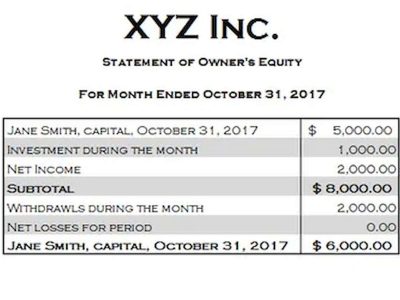
In SEC filings, companies will report the total number of shares outstanding on a given day, but in their quarterly and annual figures they must also offer the weighted average shares outstanding. A stock issuance occurs when a company issues new shares to raise capital, such as through https://ip.remdel.com.ng/period-costs/ a public offering, private placement, or employee stock option plan. This increases the number of shares outstanding, which in turn reduces the reported earnings per share, while reducing the ownership percentage for the existing shareholders. Typically, a stock split occurs when a company is aiming to reduce the price of its shares.
Rolling EPS vs. Trailing EPS
Deferred formula for outstanding shares shares usually gives them less power to vote and a lower priority for dividend payments than common shares or preferred shares. Companies usually issue deferred shares to raise funds without diluting the ownership or control of current shareholders. Understanding how outstanding shares work is critical for investors to make informed stock purchase or sale choices and for companies to regulate their capital structure and attract investment. The number of outstanding shares might change as investors buy and sell these shares. The number of outstanding shares will fall if a company buys back part of its outstanding shares.
b. Fully diluted shares outstanding:

Total shares issued refers to the total number of shares issued by the company. The company repurchases shares of its stock and holds them in its treasury as treasury shares. We can calculate the number of outstanding shares held by shareholders by subtracting the treasury shares from the total number of shares issued. Investors and analysts use outstanding shares to calculate financial ratios such as earnings per share (EPS) and price-to-earnings (P/E).
- Outstanding shares are the total number of shares issued by the company except the ones held in the company treasury.
- Diluted EPS includes options, convertible securities, and warrants outstanding that can affect total shares outstanding when exercised.
- The resulting number shows the total number of shares held by all market participants, including institutional investors, insiders, and the general public.
- We can calculate the number of outstanding shares held by shareholders by subtracting the treasury shares from the total number of shares issued.
- In addition, it assists management in understanding the company’s performance and making strategic decisions on future stock issuances or buybacks.
- If a company considers its stock to be undervalued, it has the option to institute a repurchase program.
- The outstanding shares figure is useful to know for an investor that is contemplating buying shares in a company.
How To Calculate Weighted Average Shares Outstanding
This can often be found in a company’s financial statements, but is not always readily available — rather, you may see terms like “issued shares” and “treasury shares” instead. Besides, it can be helpful to understand where the numbers you’re looking at came from. Total outstanding shares represent the number of shares of a company’s stock that are currently held by all its shareholders, including institutional investors, company insiders, and the public. The company has issued these shares, and are in the hands of investors who may accounting buy and sell them on the open market. The weighted average shares outstanding figure smooths out this variance, by simply averaging the share count across the reporting period.


They stand for the ownership stake in the company offered for sale on the public market and can be bought and sold at any time. Shares Outstanding represent all of the units of ownership issued by a company, excluding any shares repurchased by the issuer (i.e. treasury stock). Therefore, understanding trends in shares outstanding helps investors gauge not only current financial health but also future growth trajectories and corporate strategy.
- Outstanding shares refer to the total number of shares that are currently held by shareholders, minus any shares that have been repurchased by the company.
- For example, sometimes a lender will provide a loan that allows them to convert the debt into shares under certain conditions.
- Suppose the company has 10,000 outstanding shares issued to 100 shareholders.
- In other words, as in this example, those shares would not be counted if they improve results, which happens most frequently (though not invariably) when the company is not profitable.
Explore the Share Market Prices Today
Outstanding shares are determined by subtracting the number of treasury shares (shares repurchased and held by the company) from the total issued shares. Outstanding Shares refer to the total number of shares of a company’s stock that are currently owned by all its shareholders, including institutional investors and company insiders. Shares outstanding include those held by institutional investors and company insiders, while floating shares refer to those available for trading. Treasury shares are the shares that a company repurchases and holds in its treasury, which are then subtracted from the total number of shares issued to determine outstanding shares.
- Utilizing these resources correctly can enhance site usage, ensuring users make the most of the information provided.
- Finding shares outstanding online is straightforward with numerous reliable resources at your disposal.
- Stock brokers with robust research tools may include the fully diluted share count in the company’s financial metrics section.
- Companies oftentimes disclose both their “outstanding” and “exercisable” options, since certain outstanding options will have yet to vest.
- Now the matter of thought is, should we take 1000 shares outstanding as denominator or 2000.
How to Calculate Shares Outstanding: A Step-by-Step Guide
“Shares outstanding” also is a line in the data that is displayed with any stock quote. In comparison to our starting point, the basic EPS of $2.00, and the diluted EPS is $0.10 less. Since every share receives an equal slice of the pie of net income, they would each receive $0.068. They’re key to knowing how big a company is and how profitable it really is. This $8.00 EPS is referred to as “basic” because the total is not adjusted for dilution.
- While issued shares account for every share created, outstanding shares focus only on those available to public and private investors.
- The primary difference between outstanding and float stock is that outstanding shares include all issued shares of a company’s stock, whereas float stock only comprises publicly traded shares.
- The process of dilution can be through conversion through holders with secondary offerings or optionable securities.
- A company’s outstanding shares, the total shares held by shareholders excluding treasury stock, can fluctuate due to various factors.
- The reason being, if the shares are in fewer hands, it will be easier for them to manipulate the stock price by increasing and decreasing the demand and supply.
Why might a company change its number of outstanding shares?
In order to calculate a company’s earnings per share (EPS), a company’s net income is divided by its weighted average shares outstanding. Basic shares refer to the number of outstanding shares that are currently outstanding while diluted shares put into consideration things such as warrants, capital notes, and convertible stock. In essence, the fully diluted number of outstanding shares tells us the number of shares outstanding there could potentially be.
